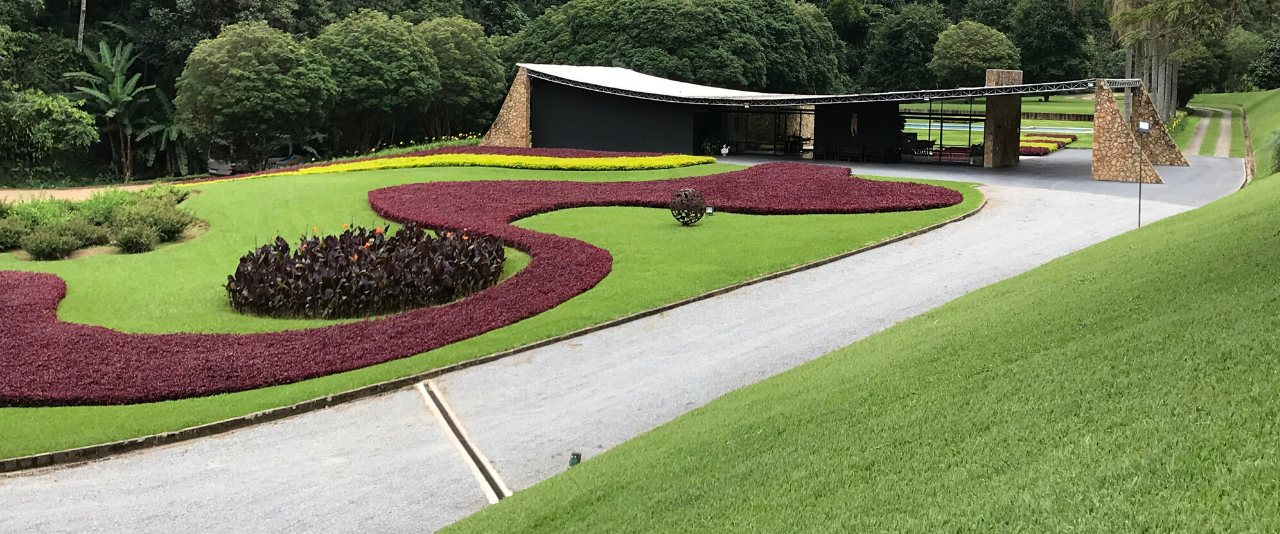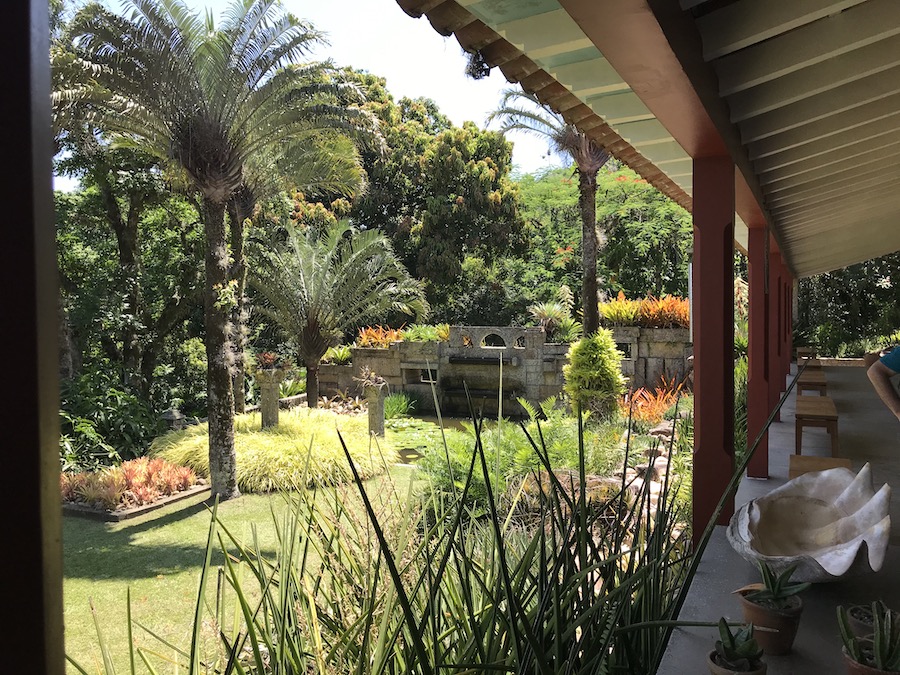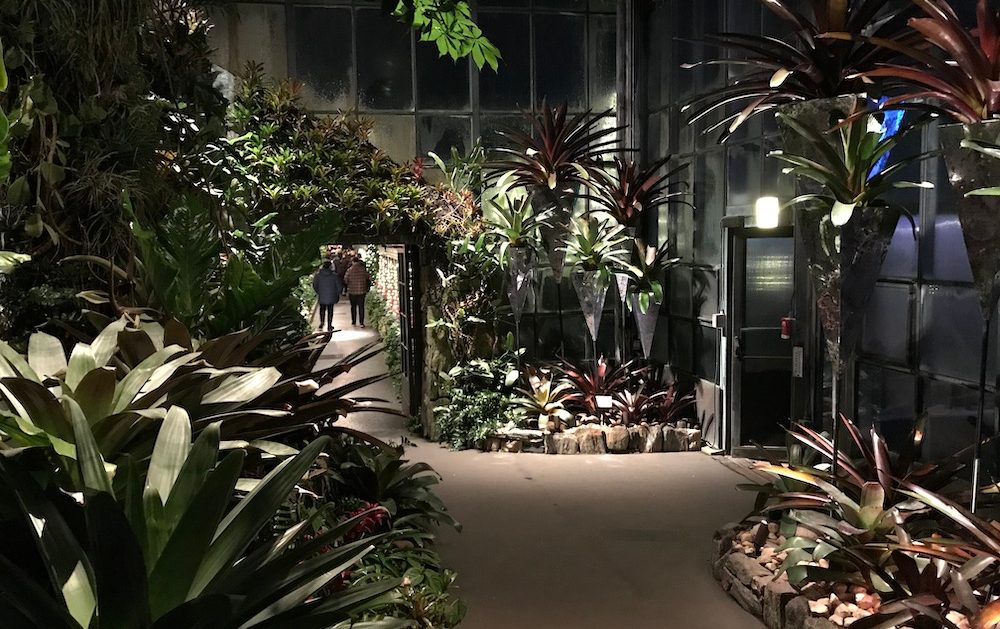
Landscaping lessons from Brazil

Landscaping lessons from Brazil
The importance of native plants
by Susan Barton, May 2020
I recently led a study abroad to Brazil for UD with my colleague, Anna Wik—what an experience! We took 14 students to the Amazon region and stayed in floating lodges to learn about the flooded rainforest ecosystem (Varzea). The water rises 12 meters during the rainy season and animals must find refuge in the trees—even the elusive jaguar!
After the Amazon, we traveled to Rio de Janeiro, where we studied the work of Roberto Burle Marx. This famous landscape architect died in 1994, but not before leaving a legacy in Brazil and throughout the world. What can we learn from him today? A lot! He is credited with being the first landscape architect to celebrate the native plants of his homeland. When he started designing landscapes in Brazil, most were comprised of European plants. But Burle Marx loved the bold textures of native tropical flora and used them in his designed landscapes.The benefits of using native plants in planned landscapes are well-known these days but still not widely practiced.
Roberto Burle Marx approached landscape design as a painter and used the landscape as his canvas. The renovated Cavanella’s landscape just north of Petropolis is a fantastic example of the brush strokes he painted with plants.
His only landscape design installed in the United States is at Longwood Gardens in nearby Kennett Square, PA.

He had a passion for plants and discovered many new species and cultivars, some of which bear his name! In his sitio (ranch) about one hour outside Rio, he displays many of those plants. But his gardens also include built features in which he reused recycled materials—another current trend. His home landscape sports a retaining wall constructed of granite from Victorian buildings torn down in Rio in the ’50s to make way for modern buildings that had taken over the public’s desire. This reuse of existing materials is an essential component of sustainable landscape design today.
The UD students on this study abroad not only walked through Roberto Burle Marx designed gardens, but biked through the famous Flamengo Park, a site he intended to provide people of Rio de Janeiro a place to relax and enjoy nature in the midst of one of the biggest cites in the world. The park uses groupings of trees and shrubs as well as rolling topography to create private spaces for people to enjoy a wide variety of outdoor activities.
In the US, we are proud of Central Park in NYC, but Rio de Janeiro boasts two of the world’s largest urban parks. Tijuca Park was once denuded for timber and then planted to sugar cane followed by coffee. When the soil could no longer sustain crops and started to wash down the mountainside, Brazil replanted the forest and it is enjoyed today by many people and animals. Unfortunately, it was planted to mostly non-native species, so Brazilians cope with some of the same invasive plant problems we face in the United States.
Roberto Burle Marx has a special place in the hearts of gardeners in the Delaware Valley because his only landscape design installed in the United States is at Longwood Gardens in nearby Kennett Square, PA. The Cascade Room at the end of the Acacia walkway and past the orchid display featured waterfalls and bromeliads he designed near the end of his life.
Remember the legacy of Roberto Burle Marx this spring by celebrating the native plants in your region and approaching your landscape with an artistic eye–in whatever form you wish to express yourself! Reuse and recycle materials to make sustainable landscapes and create gardens that others can enjoy.
Touché’ Roberto Burle Marx, your legacy lives on in the minds of many, especially in the minds of the 14 UD students who are wiser for having seen your work.

